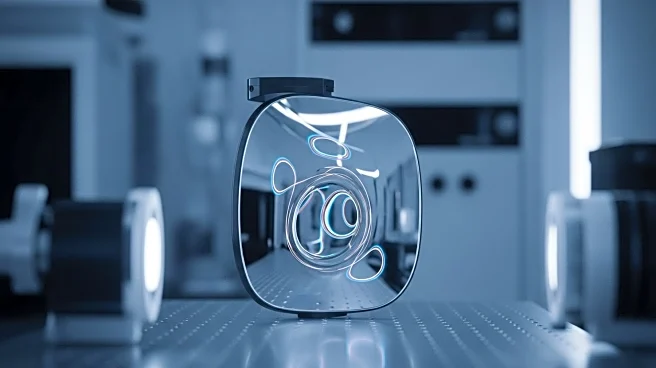What is the story about?
What's Happening?
Huygens Optics has made significant advancements in the development of deformable mirrors used in adaptive optics systems. These mirrors are crucial for astronomers to correct distortions caused by atmospheric turbulence. The system involves creating an artificial star using a laser in the upper atmosphere, observing its distortion, and then using shape-changing mirrors to correct the aberration. The deformable mirror consists of a rigid backplate with an array of linear actuators between it and a thin sheet of quartz glass, which forms the mirror's face. These actuators, made from copper wire coils beneath magnets, can flex the glass by varying the polarity and strength of current through the coils. This allows the mirror to adjust its shape to correct optical distortions. The latest iteration by Huygens Optics replaces the glass frontplate with a thinner sheet of glass-ceramic, enabling more complex shaping of the mirror, such as creating a convex center while the rest remains concave.
Why It's Important?
The development of advanced deformable mirrors is crucial for improving the precision of astronomical observations. By correcting atmospheric distortions, these mirrors enable clearer and more accurate images of celestial objects, which is vital for research and discovery in astronomy. This technology can significantly enhance the capabilities of observatories, allowing them to capture high-resolution images of distant stars and planets. The ability to precisely control the shape of the mirror also opens up possibilities for new applications in optics and imaging technologies, potentially benefiting industries that rely on high-precision optical systems.
What's Next?
The advancements in deformable mirror technology by Huygens Optics may lead to further innovations in adaptive optics systems. Observatories and research institutions could adopt these mirrors to improve their observational capabilities. Additionally, the technology might find applications in other fields requiring precise optical corrections, such as satellite imaging and laser communication systems. Continued research and development could lead to even more sophisticated systems, enhancing the resolution and clarity of images captured by telescopes and other optical devices.
Beyond the Headlines
The development of deformable mirrors also raises questions about the future of optical technology and its applications beyond astronomy. As precision in optical systems improves, there could be implications for fields such as telecommunications, where adaptive optics might enhance signal clarity and transmission efficiency. Furthermore, the technology could contribute to advancements in medical imaging, providing clearer and more detailed images for diagnostics and treatment planning. The ethical considerations of using such advanced technology in surveillance and privacy-sensitive applications may also become a topic of discussion.
AI Generated Content
Do you find this article useful?













